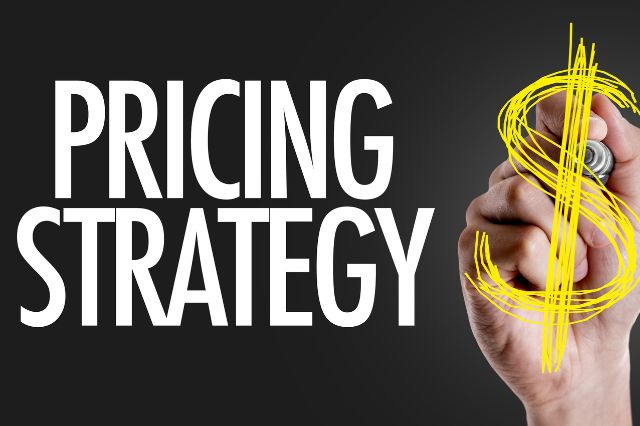Dynamic Pricing Strategies for Product Discovery: Optimizing Profitability and Customer Satisfaction

In today’s cutthroat world of online shopping, companies are always on the hunt for strategies to distinguish themselves and capture the attention of potential buyers. Dynamic pricing strategies have emerged as a powerful tool for optimizing profitability and customer satisfaction. These strategies involve adjusting product prices based on various factors such as demand, competition, and customer behavior.
Businesses can effectively balance revenue generation with customer value by implementing dynamic pricing. This article will explore the concept of active pricing strategies for product discovery, exploring their benefits and implementation. Additionally, it will discuss how a chatbot service enhances the effectiveness of dynamic pricing, enabling businesses to achieve optimal results.
Dynamic Pricing Strategies
It is a pricing strategy that allows businesses to adjust product prices in real-time based on market conditions and other relevant factors. Unlike static pricing, which offers fixed prices over an extended period, dynamic pricing considers various factors influencing customer behavior and market dynamics.
By analyzing data such as historical sales, competitor pricing, customer segmentation, and demand patterns, businesses can set prices dynamically to optimize revenue and profitability.
Personalized Pricing for Enhanced Customer Experience
One of the critical advantages of dynamic pricing is the ability to offer personalized pricing to customers. AI-powered algorithms analyze customer data, purchase history, and behavior patterns to understand individual preferences and willingness to pay.
This information allows businesses to tailor pricing for specific customer segments, offering personalized discounts, promotions, or loyalty rewards. Personalized pricing enhances the customer experience, fosters loyalty, and encourages repeat purchases, increasing customer satisfaction and long-term profitability.
Demand-Based Pricing for Market Efficiency
Dynamic pricing enables businesses to adjust prices based on demand fluctuations, ensuring market efficiency. During periods of high demand, prices can be increased to capture additional revenue. Conversely, during periods of low demand, prices can be lowered to stimulate sales and attract customers.
AI algorithms analyze real-time market data, competitor pricing, and customer demand patterns to determine optimal price adjustments. By aligning prices with demand, businesses can optimize revenue generation and maintain a competitive edge in the market.
Competitive Pricing for Market Positioning
Dynamic pricing allows businesses to respond to competitor pricing strategies in real-time. AI algorithms monitor competitor prices and market trends, enabling firms to adjust their prices accordingly.
By adopting competitive pricing, companies can position themselves strategically in the market, offering attractive prices that align with customer expectations and beat competitors. This helps businesses attract price-sensitive customers and maintains profitability and market share.
AI Solutions for Dynamic Pricing
AI solutions play a vital role in implementing dynamic pricing strategies effectively. By leveraging advanced algorithms and machine learning techniques, businesses can analyze vast data and make accurate pricing decisions in real-time.
AI algorithms consider historical sales data, customer behavior, market trends, and competitor pricing to generate dynamic pricing recommendations. AI-powered solutions can automate pricing adjustments, enabling businesses to optimize prices across a wide range of products and customer segments.
Competitive Intelligence and Pricing Optimization
One of the main benefits of dynamic pricing strategies is the ability to gather competitive intelligence and optimize pricing accordingly. By utilizing AI-powered tools and algorithms, businesses can monitor competitor prices, promotions, and market trends in real-time. This enables them to adjust their prices to stay competitive and maximize profitability.
Dynamic pricing algorithms can analyze competitors’ pricing data and recommend price adjustments to ensure that businesses offer attractive prices without compromising profitability. This competitive intelligence allows companies to make informed pricing decisions and gain an edge in the market.
Real-Time Pricing Adjustments
Dynamic pricing strategies enable businesses to adjust real-time pricing based on various factors such as demand, inventory levels, and customer behavior. With the help of AI-powered systems, businesses can monitor these factors and automatically adjust prices accordingly. For example, during periods of high demand or when inventory levels are low, costs can be increased to optimize revenue.
Alternatively, prices can be lowered to boost sales when demand is low or when there is an excess of inventory available. By implementing real-time pricing adjustments, businesses can quickly respond to market conditions and maximize profitability.
Personalized Pricing and Customer Engagement
Dynamic pricing strategies can be personalized to cater to individual customer preferences and increase customer engagement. AI-powered algorithms analyze customer data, including purchase history, browsing behavior, and demographic information, to understand individual preferences and price sensitivity. This allows businesses to offer personalized discounts, promotions, or loyalty rewards to specific customer segments, increasing their engagement and loyalty.
Businesses can improve their relationship with customers and provide a better experience by customizing pricing according to their preferences. This personalized approach improves customer satisfaction and drives repeat purchases and long-term customer loyalty.
Conclusion
In conclusion, dynamic pricing strategies have become essential to modern e-commerce, allowing businesses to optimize profitability while ensuring customer satisfaction. Companies can effectively attract customers, increase revenue, and maintain a competitive edge by adopting personalized, demand-based, and competitive pricing.
The integration of a chatbot service enhances the effectiveness of dynamic pricing by providing real-time customer engagement and support. Chatbots can gather valuable customer data, understand their preferences, and provide personalized pricing recommendations.
Furthermore, chatbots can assist customers in real-time, answering their pricing, availability, and product information queries. By embracing dynamic pricing and leveraging chatbot services, businesses can achieve the delicate balance of maximizing profitability while delivering value to customers in the ever-evolving e-commerce landscape.





